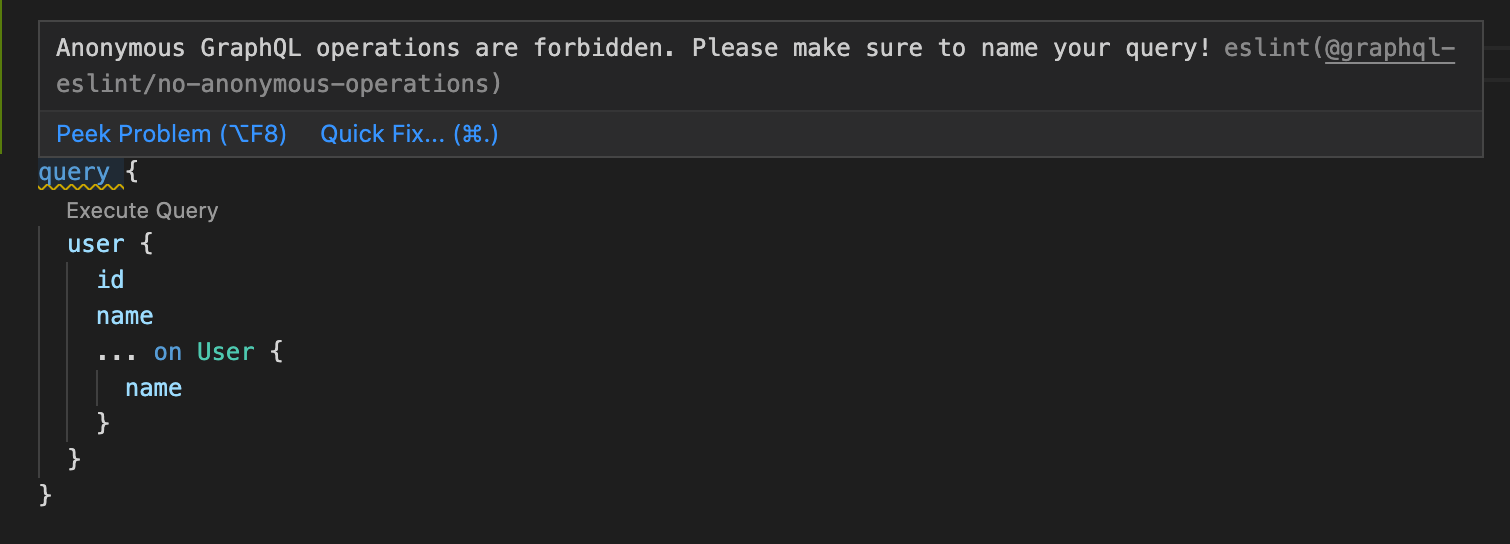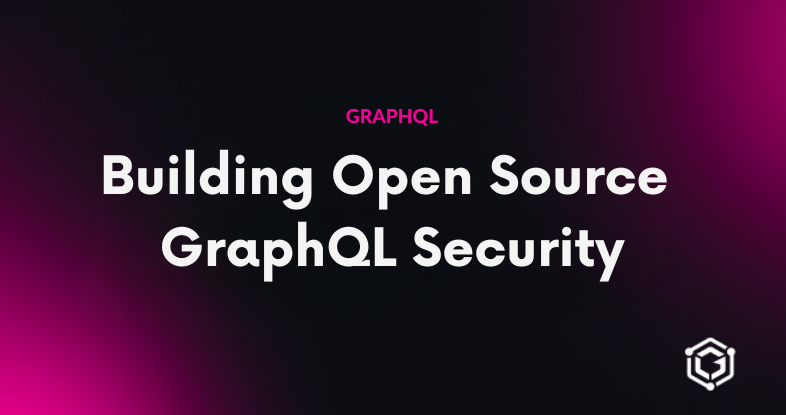Introducing GraphQL-ESLint!

We are super excited to introduce a new development tool by The Guild!
While working on very large codebases (hundreds of developers on a single codebase), we’ve noticed a gap in the current state-of-the-art development flow for GraphQL developers: it’s very hard to maintain standards in GraphQL schemas and GraphQL operations.
Those could be standards that are specific for a single codebase or shared in the community. As the
GraphQL ecosystem is growing quickly, we decided it’s important to create a modern integration
between GraphQL and ESLint, that supports all the modern needs of a GraphQL developer:
graphql-eslint.
Special thanks to ilyavolodin for his work on a similar project. We’ve joined forces to bring a new exiting tool for you!
TL;DR
yarn add -D @graphql-eslint/eslint-plugin
- 🚀 Validates, lints, prettifies and checks for best practices across GraphQL schema and GraphQL operations.
- 🚀 Integrates with ESLint core (as a ESTree parser).
- 🚀 Works on
.graphqlfiles,gqlusages in code files, and/* GraphQL */magic comments. - 🚀 Lints both GraphQL schema and GraphQL operations.
- 🚀 Extended type-info for more advanced use-cases and sophisticated validations
- 🚀 Supports ESLint directives (for example:
# disable-next-line) - 🚀 Easily extendable - supports custom rules based on GraphQL’s AST and ESLint API.
- 🚀 Integrates with
graphql-config - 🚀 Integrates and visualizes lint issues in popular IDEs (VSCode / WebStorm)
What It Does?
With graphql-eslint you can easily validate and lint your GraphQL schema and your GraphQL
operations, enforce coding-style, best practices, and avoid runtime issues.

It can run as a syntax validation tool (without a GraphQL schema), or as a complete validation solution for your GraphQL operations (with a schema loaded into it).
graphql-eslint works on your .graphql files, but also on your code-files that uses gql
(graphql template literal tag) or /* GraphQL */ magic comments.
It is fully integrated with VSCode for visualizing the reported issues, and allows you to customize the rules, and easily add new custom ones.
How Does It Work?
This package acts as a ESLint parser, and a plugin with rules.
The parser we wrote transforms the GraphQL AST into ESTree structure, so it allows you to travel the GraphQL AST tree easily.
If you wish to read more about how it works, please refer to the docs’ directory in the repo.
Writing Your Own Rules
Since it’s running as a real ESLint parser, you can easily customize it and write your own rules, based on your project’s needs and preferences.
If you are familiar with the GraphQL AST structure, you can write custom rules very quickly, since our solution comes with a wrapper that makes it easier to write and test new rules, and have full TypeScript support.
Need a new custom rule? Just create a file in your project, and travel the AST to make sure it matches your needs.
Think that rule might be valuable for others? Create a PR!
import { GraphQLESLintRule } from '@graphql-eslint/eslint-plugin'
const rule: GraphQLESLintRule = {
create(context) {
return {
OperationDefinition(node) {
if (!node.name || node.name.value === '') {
context.report({
node: node,
message: `Oops, name is required on GraphQL operations!`
})
}
}
}
}
}Compared to Similar Tools
There are other solutions that offer GraphQL linting. We decided to write a modern library that fits our clients’ needs, integrates with IDEs and is easily customizable by anyone.
apollographql/eslint-plugin-graphql- offers a similar solution, but is designed in a different architecture and unfortunately, it’s not customizable and extendable, and doesn’t work on some modern solution.cjoudrey/graphql-schema-linter- works as a standalone tool (without ESLint) and offers rules for linting GraphQL schemas only.
Summary
We hope GraphQL-ESLint becomes a central place for the community to collaborate on best practices and bring them into your team in an automated and easy way.
We already use it in companies like Microsoft on a very large codebases, and it helped us share our practices across thousands of developers!
Join our newsletter
Want to hear from us when there's something new? Sign up and stay up to date!
By subscribing, you agree with Beehiiv’s Terms of Service and Privacy Policy.
Recent issues of our newsletterSimilar articles

Announcing Accounts.js 1.0 Release Candidate
Introducing Accounts.js 1.0 Release Candidate, an end to end authentication and accounts management solution.

Building Open Source GraphQL Security
Learn how open-source boosts GraphQL security and explore defensive and offensive tools, resources, and best practices to protect your GraphQL APIs.

Open Source composition and validation library for Apollo Federation
Introducing MIT licensed drop-in replacement for the Apollo Federation composition library.

GraphQLConf 2023 Recap
Explore the highlights of GraphQLConf 2023. Learn about the latest trends in GraphQL, from gateway solutions to composite schemas and innovative projects.